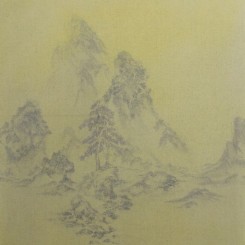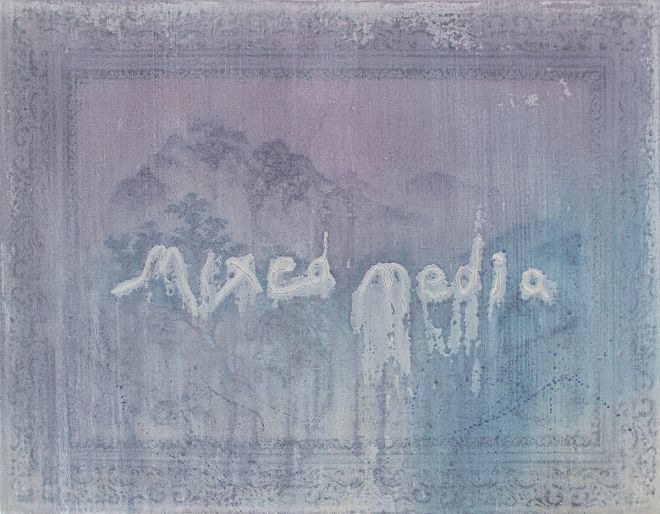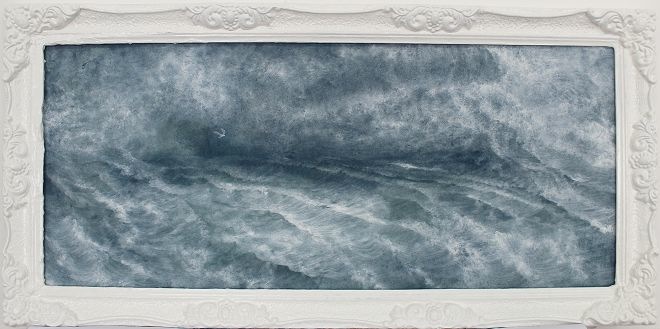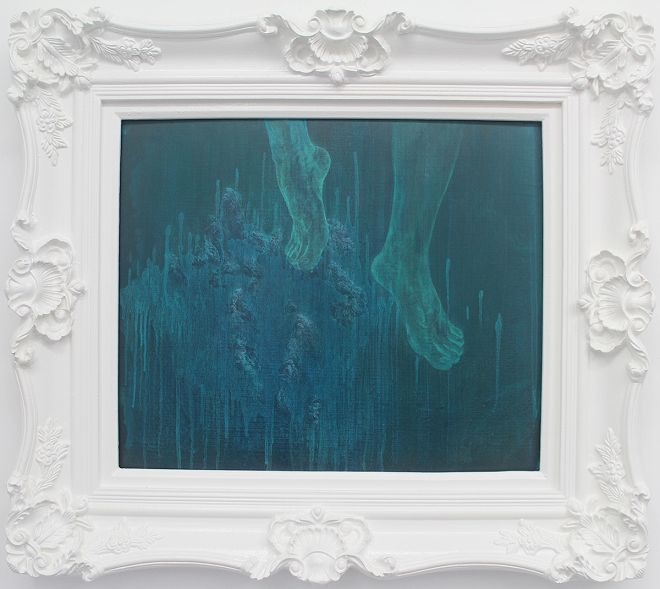Zhang Tianjun: Fountain of Youth
L-Art Gallery (Area C1, Tianfu Software Park, Tianfu Avenue, Chengdu), Sep 20—Nov 30, 2014
Lush vegetation creeps amongst strange rocks and mountainous forms, all enveloped in bizarrely fantastic colors. The landscape is not completely flush to the canvas, though, as traces of cun brushwork [i.e. textural brushwork] from historic masters like Guo Xi and Huang Gongwang are visible in specific sections of the picture plane. Zhang Tianjun’s work does not refer to any single period or masterpiece, and his focus appears not to be on the content of the piece itself, but rather on the multiplicities of spatial composition. The colors on the canvas are not so much components that contribute to the whole of the image so much as mediators between the viewers and the painting’s intent.
Zhang Tianjun approaches the concept of “landscape” with what most easily conforms to ideas of “artistic” composition, which he then uses as the central visual narrative before incorporating a technique of “alienation” (jianli) to separate the narrative from the visual, producing shattered perceptions and imaginings. This is particularly evident in his three Fountain of Youth works (numbered 13, 14 and 15), in which the image on the canvas is overpowered by a frame, yet both frame and image are created by Zhang in the same hue and style, thus shifting the relationship between the scene and the setting from actual to nominal. Hastily inscribed characters which appear at the top of the canvas (reading, for example, “seascape 2014″ or “mixed media”) further emphasize this materiality, again creating a block in the passage toward an envisioned space. Certainly, merely in terms of the history of techniques, this century-old method of superimposition (like the collages in Synthetic Cubism, not to mention Pop Art, later) isn’t exactly new; Zhang Tianjun’s work is aesthetically comfortable, yet does not convey a simple indeterminance—the significance of his work is shrouded in an obscurity with a certain tack. Zhang himself has said: “I am not a rebel,” and while a pining for tradition is certainly not apparent in his work, neither is there any evidence of resistance or destruction thereof. Perhaps a final state of obstruction is precisely the raison d’être of his quest.
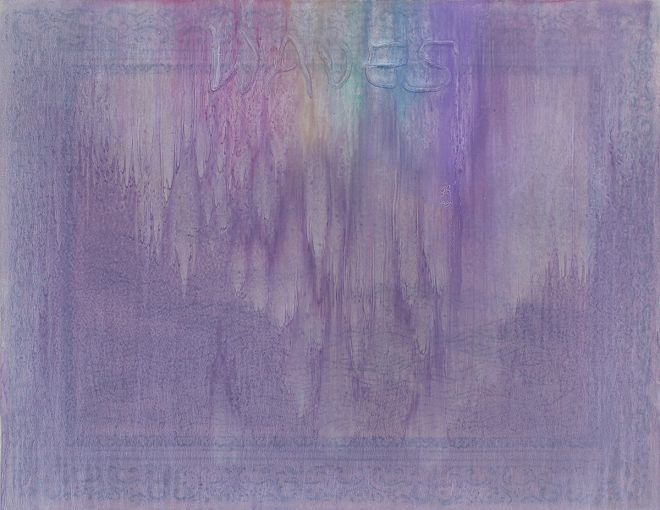
Zhang Tianjun, “The Fountain of Youth 13”, 68 × 88 cm, oil on canvas, 2014
张天军,《青春之泉13》,布面油画,68 × 88 cm,2014
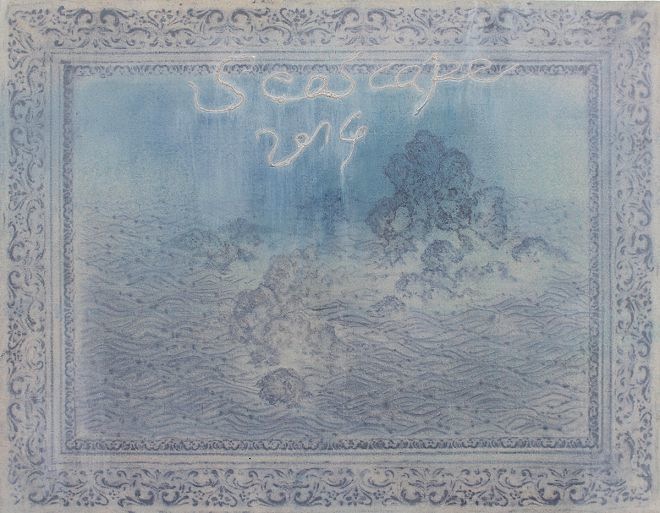
Zhang Tianjun, “The Fountain of Youth 14”, 68 × 88 cm, oil on canvas, 2014
张天军,《青春之泉14》,布面油画,68 × 88 cm,2014

